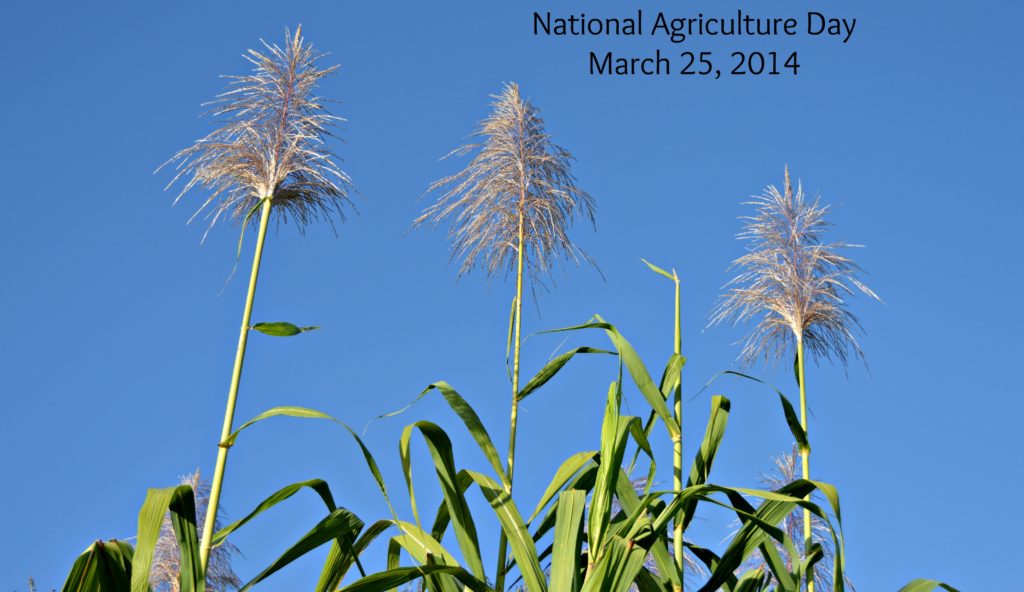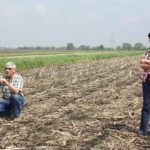Today’s post is sponsored by Illinois Farm Families, for which I serve as a Brand Ambassador. You can read more about my role as a Brand Ambassador here.
Those of us who live in cities and suburbs rarely get a chance to express our appreciation to the farmers and ranchers who raise and grow the food that we eat. Moreover, most of have very little understanding of how our food is produced or the large role that agriculture plays in our country’s economy.
Every year, the Agriculture Council of America helps the average urban and suburban American, and our country’s lawmakers, deepen their understanding and appreciation for agriculture through National Agriculture Day. National Agriculture Day is a day to recognize and celebrate the abundance provided by our country’s farmers and ranchers and to acknowledge their contribution to our economy. This year, National Agriculture Day will take place on March 25.
Agriculture provides almost everything we eat, use and wear on a daily basis. But too few of us understand how the agriculture industry provides us with these basic necessities and the challenges that farmers and ranchers face. A few generations ago, most Americans were directly involved in — or had relatives or friends involved in — agricultural-related endeavors. Today, that is no longer the case.
National Ag Day is designed to educate consumers and government officials alike about the importance of the agriculture industry through a variety of local and national events. In Washington DC, the Agriculture Council will host major events for lawmakers including a Mix-and-Mingle Luncheon and the National Celebration of Agriculture Dinner. Additionally, the ACA will bring approximately 100 college students to Washington to deliver the message of Ag Day to the Hill.
On a local level, many agricultural community groups, farm bureaus and even individual farmers and ranchers host events such as fairs, exhibits at local business and community gathering places, school field trips and more to mark National Ag Day in their communities. There may even be such events in your community.
As parents, what can we do to participate in National Agriculture Day and help our city and suburban kids about where their food comes from and how fortunate we are to have access to a safe and abundant food supply? Here are a couple of ideas:
- Visit a farmers’ market. March means spring in much of the country, if not Chicago, and many farmers’ markets are beginning to open for the season. Farmers’ markets provide a great opportunity for kids (and parents!) to think about different kinds of food production. Talk to the farmers about their growing seasons. Ask about the crops that they grow and when those crops will be ready to harvest.
- Compare what is available at the farmers’ market to what is available at the grocery store. Talk to your kids about why there are fewer offerings at the farmers’ market. Use the opportunity to educate them about growing seasons and where the food we eat comes from, be it a few counties away or halfway around the world. What are the benefits of locally grown food? What is the benefit of having access to fruits and vegetables all year round?
- Plan a trip to a nearby farm. Many farms open their doors to school, Scout, church and other groups. Some CSA farms (community-supported agriculture) have Open Houses for their customers during the spring and fall. Even a trip to a pick-your-own farm can help teach kids about how labor-intensive harvesting food is.
- Visit the zoo. Many zoos have a petting zoo or a farm-in-the-zoo exhibit to help teach kids about farm animals and how people rely on animals for food, clothing and more.
- Plan a vegetable garden. March is the perfect time to begin planning for your own vegetable garden. Take your kids to a plant nursery or garden center. Research what crops grow well in your area. Think about the conditions in your yard: Do you have a lot of sun? Shade? Observe the seedling plants or pick our seeds of your own to start.
- Cook a meal or bake a treat together. Talk about the different ingredients and where they came from. Do your kids know how does wheat become flour? Where their eggs come from? What the difference between whole and nonfat milk is? A discussion about cooking and food can very quickly turn into a discussion about where our food comes from and who grows it.
These days, talking about agriculture can lead to some pretty tense conversations. There are some many heated issues around food production including organic versus conventional farming, the safety and efficiency of GMOs, how antibiotics should be used, and sustainability.
Wherever you fall on these issues, I think we can all agree that we owe a huge debt to the men and women who work tirelessly in the fields and barns of this country to raise and grow our food. The very fact that we can have a debate over the benefits and drawbacks of different methods of food production is a luxury that only a few nations in history have been able to afford. So as we approach National Agriculture Day, take the opportunity to think about the role that farming and agriculture plays in all of our lives.
Full disclosure time: In my role as a Brand Ambassador for Illinois Farm Families, I am being compensated for my time and writing. As always, the opinions expressed here are entirely my own.







[…] Full disclosure time: In my role as a Brand Ambassador for Illinois Farm Families, I am being compensated for my time and writing. As always, the opinions expressed here are entirely my own. Don’t forget about National Agriculture Day on March 25! […]